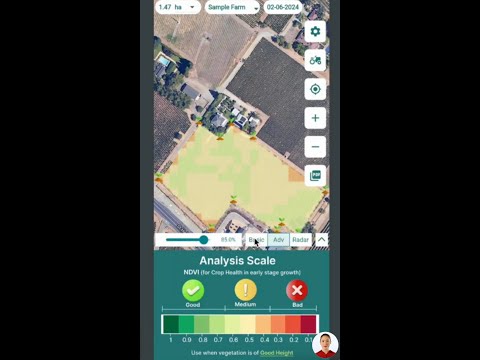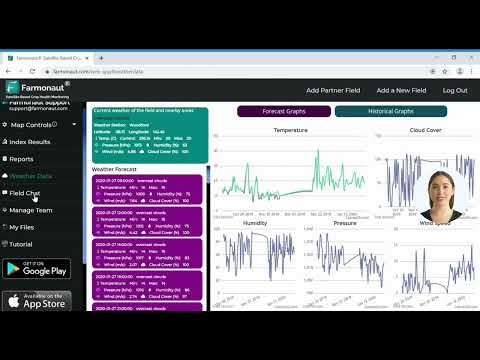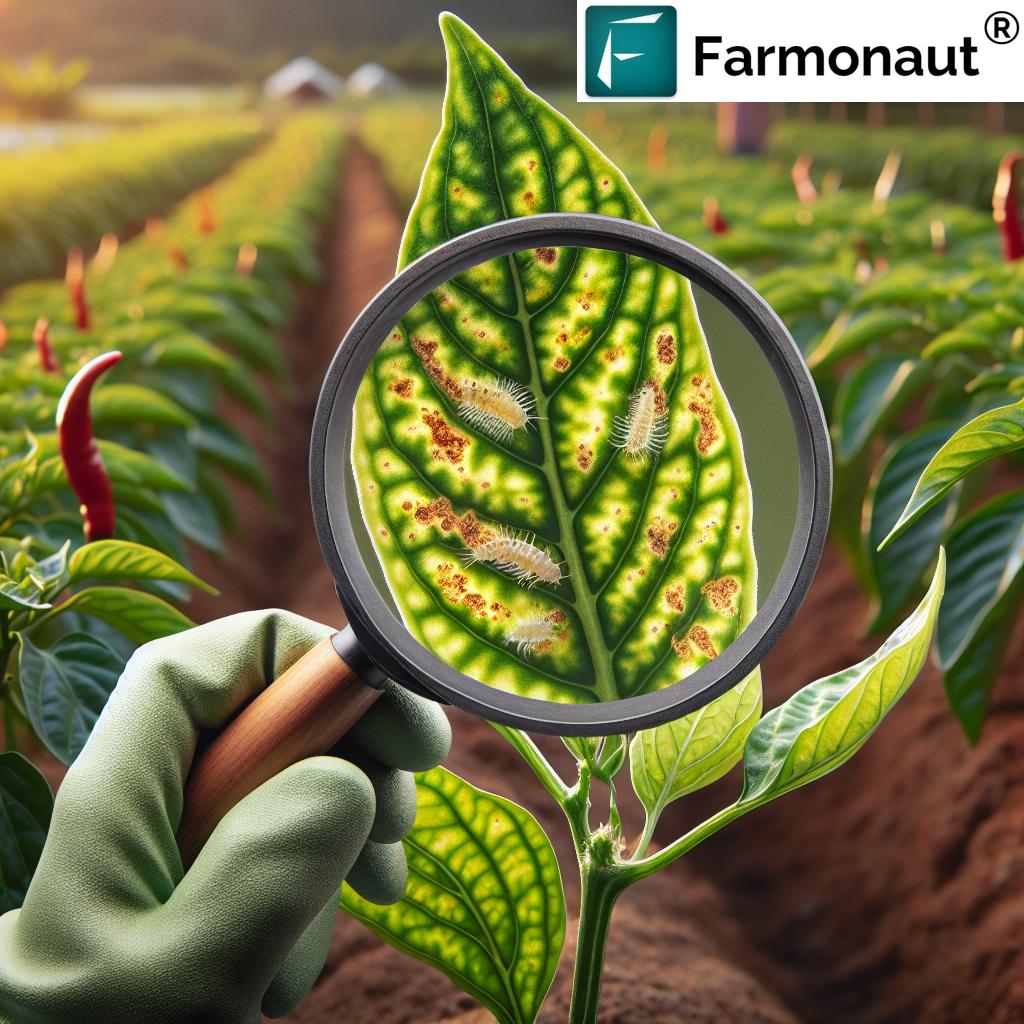Whitefly Pest Control: 7 Powerful Methods for Healthy Crops
“One female whitefly can lay up to 400 eggs in her lifetime, rapidly increasing infestation risk on crops.”
“Whiteflies can transmit over 100 plant viruses, making early detection and control crucial for healthy harvests.”
Table of Contents
- Whitefly Life Cycle and Identification
- Whitefly Damage: How Whiteflies Harm Crops
- Monitoring and Early Detection of Whiteflies
- Cultural Practices to Reduce Whitefly Populations
- Biological Control of Whiteflies
- Chemical Control for Whitefly Infestations
- Integrated Pest Management for Whiteflies
- Whitefly Control Methods Comparison Table
- How Farmonaut Enhances Pest Detection & Management
- FAQs – Whiteflies & Their Management
- Conclusion
Whiteflies are notorious among those engaged in agriculture, horticulture, and forestry. As small, sap-sucking insects, they not only weaken plants through direct feeding but also transmit harmful plant viruses, leading to significant economic losses worldwide. Without efficient management of whitefly populations, crops like tomato, cotton, and numerous greenhouse vegetables can suffer devastating infestations and reduced yields.
In this comprehensive guide, we’ll walk through the whitefly life cycle and identification, the types of damage they cause, and the seven most powerful methods encompassing cultural, biological, and chemical control for effective whitefly pest management. We’ll also explore how Farmonaut’s satellite-powered agricultural technologies can enhance whitefly detection and help us adopt an integrated approach that protects plant health and boosts productivity.
Let’s discover how to manage whiteflies on plants with effective and sustainable strategies!
Whitefly Life Cycle and Identification
Successful whitefly control begins with thorough understanding of their appearance and development. Early detection and identification are essential for timely management before populations explode.
How to Recognize Whiteflies on Plants
- Size: Adults are tiny—only 1–2 mm in length (about the size of a pinhead).
- Wings: They have characteristic powdery white wings, laid roof-like over their yellowish bodies, creating a white, dusty appearance.
- Location: Whiteflies are typically found on the undersides of leaves, where they congregate in large numbers, feed, and lay eggs.
The Whitefly Life Cycle: Key Stages
The life cycle of a whitefly is rapid and can complete in as little as 16 days under favorable environmental conditions, enabling swift population growth. It includes:
- Egg Stage: Females lay eggs on leaf undersides. One female can lay up to 400 eggs during her short life span.
- Nymphal Stages: After eggs hatch, four nymphal stages (crawlers and subsequent instars) follow, each feeding and developing on the same leaf.
- Adult Whitefly: Upon pupation, adults emerge and continue the cycle, feeding on plant sap and initiating new infestations by laying eggs.
Since whiteflies thrive quickly, missing early identification can mean facing a population explosion in your crops.
Whitefly Damage: How Whiteflies Harm Crops
Whiteflies inflict a triple threat to plants—from draining their vitality to facilitating disease outbreaks:
1. Direct Feeding Weakens Plants
- Whiteflies feed by extracting sap from the phloem of leaves.
- This feeding habit causes wilting, stunted growth, leaf yellowing, and overall weakening, making the plant more susceptible to environmental stress.
2. Honeydew Production & Sooty Mold
- The insects’ excretion of sticky honeydew accumulates on foliage, leading to the development of sooty mold.
- This mold interferes with photosynthesis, reducing vigor and yield, and can also make produce unmarketable.
3. Virus Transmission: A Major Threat
- Perhaps the most devastating effect: whiteflies transmit viruses including Tomato Yellow Leaf Curl Virus and Cotton Leaf Curl Virus.
- These viruses can quickly devastate entire fields, resulting in substantial economic losses.
Early detection and prompt management are vital to limit the impact of these pests. Remember, whiteflies are vectors of more than 100 plant viruses!
Monitoring and Early Detection of Whiteflies
For success in whitefly management, we must prioritize monitoring and early detection, which allows us to intervene before populations reach damaging thresholds and viruses spread.
Key Methods for Early Detection
-
Yellow Sticky Traps:
– Place bright yellow sticky traps at crop canopy level to attract adult whiteflies.
– Use one trap per every two large plants to maximize effectiveness, especially in greenhouse crops.
– Adding black patterns to the traps can further increase whitefly captures. -
Regular Crop Inspections:
– Frequently check undersides of leaves for adults, eggs, and nymphs. -
Trap Placement and Maintenance:
– Keep traps clean and replace them regularly; whiteflies are not strong fliers so strategic trap positioning matters.
These monitoring methods are the first line of defense in keeping our crops healthy and pest populations manageable.
Cultural Practices to Reduce Whitefly Populations
Cultural methods form the backbone of integrated pest management for whiteflies. These practices help reduce whitefly populations sustainably and make chemical interventions less frequent.
1. Sanitation & Weed Control
- Promptly remove and destroy infested plant material and all related weeds—these serve as alternative hosts for whitefly populations.
- Carefully inspect and quarantine any introduced plants, especially within a greenhouse setting.
2. Reflective Mulches and Plastic Mulches
- Use metallic or reflective mulches (such as metallic-coated plastic or construction paper) around small plants to repel whiteflies.
- This is most effective when all weeds are removed first; cut 3-4 inch holes for each plant or transplant.
- Plastic mulches offer dual benefits—reduce weeds and help decrease virus incidence from whiteflies.
3. Host-Free Periods (Especially in Greenhouses)
- Remove all susceptible plants from the area or greenhouse for at least two weeks to disrupt the whitefly life cycle.
- This simple cultural practice can break the cycle before eggs develop into adults.
4. Proper Plant Spacing & Air Movement
- Implement adequate plant spacing to reduce humidity, making the environment less attractive for whitefly survival and growth.
- Enhance air circulation—whiteflies favor still, warm air for optimal development.
By implementing these cultural practices, we can significantly reduce the risk and impact of whitefly infestations in our crops.
Biological Control of Whiteflies
Biological control methods offer highly effective, eco-friendly ways to manage whitefly infestations, especially in greenhouse crops and protected environments.
1. Parasitic Wasps
- Encarsia formosa and Eretmocerus eremicus are parasitic wasps that target whitefly nymphs.
- Adult wasps lay eggs inside whitefly nymphs, their larvae consume whitefly from inside, killing them and ceasing further reproduction.
- Highly suitable for ongoing whitefly control in greenhouse vegetables.
2. Predatory Mites
- Amblyseius swirskii and Amblydromalus limonicus are predatory mites that feed on whitefly eggs and nymphs.
- Not recommended for tomato crops due to sticky exudates on tomato leaves.
3. Predatory Bugs
- Macrolophus pygmaeus is a predatory bug especially effective in tomato crops for reducing whitefly populations.
4. Entomopathogenic Fungi
- Fungi such as Lecanicillium muscarium attack whiteflies, growing inside and causing lethal infections.
- Such natural enemies are crucial in keeping whitefly populations below damaging thresholds, particularly with reduced environmental impact.
Integrating natural enemies into our overall pest management program not only controls whiteflies but also promotes environmental sustainability.
Tip: Use Farmonaut’s crop health monitoring to assess the impact of whitefly control methods and guide the application of biological controls at the right time, driven by real-time satellite data insights.
Chemical Control for Whitefly Infestations
Chemical methods are sometimes essential, particularly for severe whitefly infestations where other methods are insufficient. To prevent resistance and support sustainability, use chemicals judiciously and rotate products.
Best Insecticides for Whiteflies
-
Spiromesifen (Oberon):
– Effective against all whitefly life stages (especially nymphs and eggs).
– Apply when nymphs start appearing.
– Dosage: 200 ml per acre (follow label instructions for precise needs). -
Flupyradifurone (Sivanto Prime):
– Systemic insecticide delivered via xylem, moves inside the plant for targeted action.
– Effective against a broad range of sucking pests including whiteflies, with selectivity and minimal non-target impact. -
Movento Energy (Spirotetramat):
– Used to strengthen the rotation and delay insecticide resistance development.
Recommended Modes of Action & Rotation
- Alternate between different classes of insecticides to delay resistance.
- For example: Oberon → Sivanto Prime → Movento Energy, applied at 10-15 day intervals per crop stage and pest pressure.
- Follow all safety and pre-harvest interval recommendations for each chemical product.
Important: Chemical controls should be integrated with other control methods for full-season whitefly management and environmental safety.
Further reading: Explore Farmonaut’s advisory tools to receive customized, data-driven alerts on pest outbreaks, reducing unnecessary chemical use.
Integrated Pest Management for Whiteflies
The integrated pest management (IPM) approach combines multiple strategies for long-term, resilient whitefly control. Here’s how we can build an effective, IPM-based action plan for whiteflies:
-
Vigilant Monitoring and Early Detection:
- Use yellow sticky traps.
- Regularly scout leaves for eggs, nymphs, and adults.
-
Cultural Practices:
- Practice sanitation by removing infected weeds and plant material.
- Employ reflective/plastic mulches and maintain host-free periods in greenhouses.
-
Biological Control:
- Release natural enemies such as wasps, mites, or predatory bugs appropriate for crop and environment.
-
Chemical Controls:
- Apply insecticides only when necessary and always rotate modes of action to manage resistance development.
-
Continuous Evaluation:
- Assess the success of controls and adapt strategies as infestation levels change.
Tip: Leverage Farmonaut’s carbon footprint monitoring to measure the environmental impact of your pest management choices, supporting sustainability goals alongside effective whitefly controls.
Whitefly Control Methods Comparison Table
| Method | Estimated Effectiveness (%) | Application Frequency | Cost Estimate | Environmental Impact | Best For |
|---|---|---|---|---|---|
| Sanitation & Weed Management | 60-70% | Weekly or as needed | Low | Low | All farms |
| Reflective/Plastic Mulches | 65-80% | Seasonal | Medium | Low | Small/medium farms, gardens |
| Host-Free Periods | 55-70% | Occasional | Very Low | Low | Greenhouse crops |
| Sticky Trap Monitoring | 30-50% | Weekly/as needed | Low | Very Low | All farms |
| Biological Control (Wasps, Mites, Fungi) | 70-90% | As needed/bi-weekly | Medium-High | Very Low | Greenhouses, high value crops |
| Chemical Insecticides (Oberon, Sivanto, etc.) | 70-95% | As needed/rotational | Medium-High | High | Large/open field operations |
| Integrated Pest Management (IPM) | 90-98% | Continuous | Varies/Medium | Low to Moderate | All operations (most sustainable) |
How Farmonaut Enhances Pest Detection & Management
Effective monitoring is the backbone of integrated pest management for whiteflies. Today, Farmonaut brings advanced technology into farmers’ hands to boost early detection and optimize resource use for fighting whitefly infestations.
Satellite-Based Crop Health Monitoring
- Farmonaut delivers multispectral satellite imagery (including NDVI) straight to web, Android, or iOS apps, highlighting areas where vegetation health is declining—an early indicator of pest outbreaks like whiteflies.
- Detect subtle changes in crop color or density caused by feeding, weakened plant vigor, or virus-transmission from whiteflies.
Jeevn AI Advisory for Pest Management
- The Jeevn AI system analyzes live field data (weather, satellite, pest risk factors) to advise the best timing & combination of whitefly control methods.
- It recommends precise actions—reducing unnecessary chemical use and promoting cultural or biological controls as needed.
Real-Time Alerts & Resource Management
- Our real-time alerts help you apply insecticides when populations spike, not on a set schedule—minimizing input costs and resistance pressure.
- The Farmonaut fleet management module supports the efficient movement and timely deployment of farm resources, reducing downtime during pest pressure peaks.
Product Traceability & Sustainable Incentives
- By using Farmonaut’s blockchain-based traceability, agribusinesses can prove compliance with sustainable and safe produce standards, boosting market value and consumer confidence.
Farmonaut API Access for Developers
- Developers and agritechs can access satellite & weather inputs for regions affected by whitefly outbreaks using our API and API documentation. Integrate monitoring tools directly into custom platforms.
Farmonaut empowers everyone from smallholder farmers to large-scale operations with affordable, scalable precision agriculture, helping manage pests like whiteflies holistically and sustainably.
For scalable monitoring and control, check our Large Scale Farm Management App—which supports remote detection, action tracking, and compliance across extensive farm holdings and plantation blocks.
FAQs – Whiteflies & Their Management
Q1. What are the most effective whitefly control methods for tomato crops?
For tomato crops, combine cultural practices (sanitation, reflective mulches), sticky trap monitoring, and use of predatory bugs like Macrolophus pygmaeus. Apply chemical insecticides only as a last resort, always rotating modes of action to delay resistance.
Q2. How do whiteflies transmit viruses?
Whiteflies act as vectors by acquiring plant viruses as they feed on infected plant sap. When they move to a new plant and feed, they inject the virus through their saliva, quickly transmitting infections across entire fields.
Q3. Are biological controls safe for human health and the environment?
Yes—biological control of whiteflies employs natural enemies (wasps, mites, fungi) that specifically target pests without polluting the environment or harming humans, livestock, or beneficial insects like pollinators.
Q4. How often should sticky traps be checked and replaced?
Inspect yellow sticky traps at least once a week; replace them as they become covered, dusty, or lose stickiness for maximum monitoring and early detection efficiency.
Q5. How does Farmonaut help with whitefly and other pest management?
Farmonaut provides satellite-driven crop health monitoring, real-time AI crop advisory, and actionable alerts. This empowers farmers to detect pest outbreaks early, optimize control actions, and minimize chemical inputs.
Conclusion
Whiteflies pose major, ongoing challenges for agriculture, horticulture, and commercial forestry worldwide. Their ability to weaken plants, transmit devastating viruses, and rapidly multiply makes them a formidable pest. However, by understanding the whitefly life cycle and identification, the nature of their damage, and deploying a spectrum of whitefly control methods—from cultural, to biological, to judicious chemical controls—we can protect crops both in field and greenhouse settings.
The secret to sustainable long-term success is an integrated pest management for whiteflies approach. This combines rigorous monitoring and early detection, proactive cultural practices to reduce populations, strategic use of natural enemies, and careful application of chemical insecticides where warranted.
Farmonaut’s satellite technology, AI advisory, and resource management tools are at the forefront, equipping us to detect problems sooner, reduce reliance on chemicals, and make data-driven decisions that preserve both yield and environmental health.
By applying this knowledge and leveraging modern technologies, we ensure our crops are resilient, our yields are high, and our food production remains sustainable in the face of even the most significant pest challenges.






















